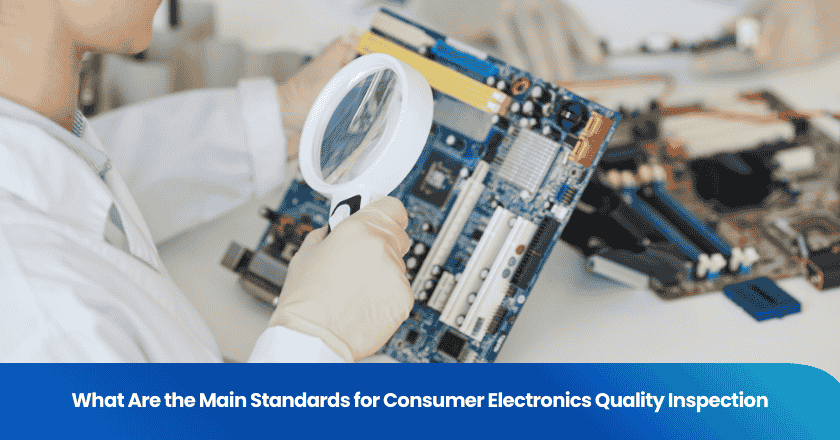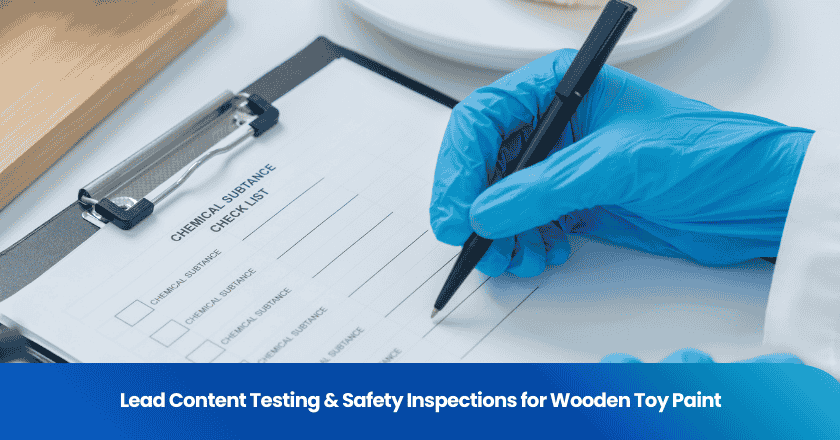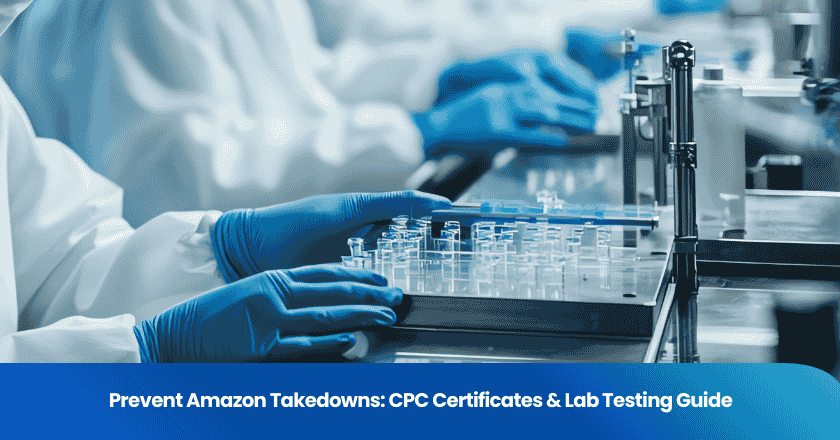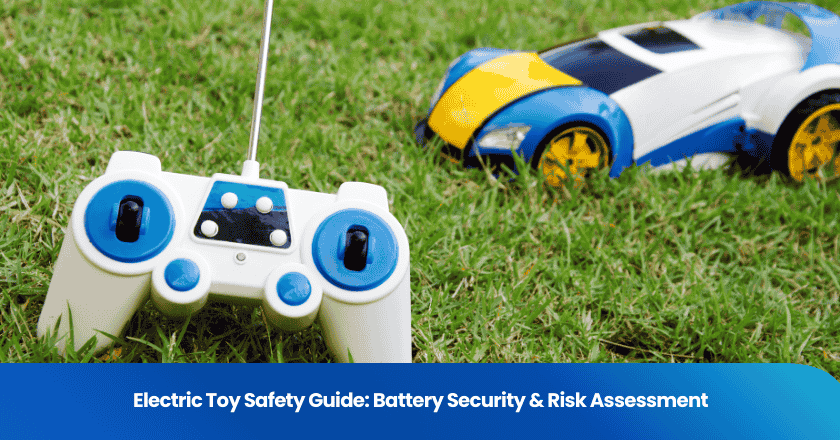
You need to follow established standards to ensure safety and compliance in consumer electronics quality inspection. The most recognized standards include:
| Standard | Region | Focus |
|---|---|---|
| CE | European Union | Health, safety, environmental protection |
| FCC | United States | Electromagnetic interference |
| RoHS | Global | Restriction of hazardous substances |
| UL | North America | Product safety certification |
| CB Scheme | Global | Harmonized electrical safety standards |
Maintaining high safety levels reduces costly recalls and failures. Quality inspection presents challenges, such as balancing cost-efficiency and transparency. Aligning with international compliance standards improves your global competitiveness and builds customer trust.
Key Takeaways
- Follow established standards like ISO 9001 to create a strong Quality Management System. This helps ensure consistent product quality and reduces defect rates.
- Achieve UL Certification to demonstrate product safety. This certification builds consumer trust and is often required for market access.
- Ensure compliance with RoHS regulations to limit hazardous substances in electronics. This protects the environment and avoids costly penalties.
- Conduct regular inspections to enhance product reliability. Early detection of defects leads to fewer returns and higher customer satisfaction.
- Stay updated with evolving standards to meet regulatory demands. Adapting to changes ensures your products remain safe and competitive in the market.
Consumer Electronics Quality Inspection Standards
ISO 9001
You rely on ISO 9001 as a foundational standard for consumer electronics quality inspection. This standard sets the framework for a robust Quality Management System (QMS), ensuring that your processes consistently deliver products that meet customer and regulatory requirements. When you define the scope of your QMS, you must accurately reflect your actual operations. Any discrepancies can lead to compliance issues during audits. Regulatory compliance plays a crucial role in shaping your QMS, as different industries have unique legal obligations. You should clearly state which products or services fall under your QMS, making strategic decisions that align with your business objectives.
- The scope statement impacts how auditors evaluate your organization.
- You must ensure the scope matches your real operations to avoid compliance risks.
- Regulatory requirements shape the scope and obligations of your QMS.
- You need to specify which products or services are covered.
- Strategic alignment with your business and industry is essential.
By following ISO 9001, you standardize your procedures, which reduces variability in production. This approach leads to consistent product quality and up to 20% lower defect rates compared to non-certified manufacturers. You also benefit from continuous improvement practices, allowing you to refine your processes based on production data and customer feedback. This ensures your products keep pace with evolving technology and market expectations.
IEC 61000
IEC 61000 addresses electromagnetic compatibility, a critical aspect of consumer electronics quality inspection. This standard ensures your products can operate reliably in environments with electromagnetic interference (EMI). The main objectives and testing procedures include:
| Objective/Procedure | Description |
|---|---|
| Establish immunity requirements | Evaluate performance against electrostatic discharges. |
| Specify test levels | Define ranges based on environmental and installation conditions. |
| Outline test procedures | Include waveform, equipment, setup, calibration, and measurement uncertainty. |
| Provide guidance for product committees | Offer references for selecting tests and severity levels. |
| Exclude certain tests | Does not cover ESD sensitivity during handling and packaging. |
You focus on both emission and immunity. Emission requirements limit the electromagnetic energy your devices produce, while immunity requirements ensure your products continue to function when exposed to external disturbances. You also consider coupling paths, which describe how electromagnetic energy travels between sources and receptors. For example, IEC 61000-4-3 tests radiated immunity, and IEC 61000-4-6 focuses on conducted immunity. By meeting these requirements, you enhance interference resistance and signal integrity, which are vital for the reliability of sensitive electronic systems.
UL Certification
UL Certification stands as a benchmark for safety in consumer electronics. You use this certification to demonstrate that your products meet rigorous safety standards. UL testing covers durability, performance, and risk reduction, ensuring your appliances can withstand real-world usage scenarios. Engineers worldwide recognize UL standards for their comprehensive approach to safety certification.
- Durability testing verifies your products can handle daily use.
- Safety assurance minimizes risks such as electrical fires or shocks.
- Regulatory compliance with UL standards simplifies your access to global markets.
- Comprehensive testing covers electrical faults and environmental factors.
- The UL mark signals to consumers that your products are reliable and safe.
You build consumer confidence by achieving UL Certification. Many regions require this certification for market access, making it essential for your business. The UL mark is widely recognized as a symbol of reliability, reinforcing your commitment to safety and quality.
RoHS
RoHS (Restriction of Hazardous Substances) is a global directive that shapes the environmental compliance of consumer electronics. You must ensure your products do not exceed the maximum allowable concentrations for hazardous substances. The following table summarizes the main restrictions:
| Substance | Maximum Allowable Concentration |
|---|---|
| Lead (Pb) | 0.1% by weight in homogeneous materials |
| Mercury (Hg) | 0.1% by weight in homogeneous materials |
| Cadmium (Cd) | 0.01% by weight in homogeneous materials |
| Hexavalent Chromium (Cr6+) | 0.1% by weight in homogeneous materials |
| Polybrominated Biphenyls (PBBs) | 0.1% by weight in homogeneous materials |
| Polybrominated Diphenyl Ethers (PBDEs) | 0.1% by weight in homogeneous materials |
| Bis(2-Ethylhexyl) Phthalate (DEHP) | 0.1% by weight in homogeneous materials |
| Benzyl Butyl Phthalate (BBP) | 0.1% by weight in homogeneous materials |
| Dibutyl Phthalate (DBP) | 0.1% by weight in homogeneous materials |
| Diisobutyl Phthalate (DIBP) | 0.1% by weight in homogeneous materials |
RoHS compliance has led to a significant reduction in the use of toxic substances in electronics. You face ongoing challenges in maintaining compliance, as authorities conduct regular market surveillance and testing. Non-compliance can result in product recalls, fines, and loss of market access. To mitigate these risks, you adopt best practices such as supply chain transparency and regular component testing.
By aligning your processes with these standards, you ensure that your consumer electronics quality inspection delivers products that are safe, reliable, and environmentally responsible. Meeting these safety standards not only protects consumers but also strengthens your position in the global market.
Additional Compliance Standards
As you expand your reach in the global market, you must understand additional compliance standards that play a vital role in consumer electronics quality inspection. These standards help you meet regulatory requirements, improve product quality, and ensure safety for end users.
CE
When you target the European market, CE marking becomes essential. This mark shows that your products meet strict EU health, safety, and environmental protection standards. The CE mark is not just a legal requirement; it also builds trust with consumers and businesses. You gain access to the entire European Economic Area (EEA) once your products carry this mark.
| Aspect | Explanation |
|---|---|
| Compliance | Indicates conformity with EU health, safety, and environmental standards. |
| Market Access | Allows products to move freely within the EEA. |
| Consumer Assurance | Assures consumers of product safety and compliance. |
| Trust Enhancement | Increases consumer trust in your product. |
| Legal Protection | Protects you from fines and recalls. |
To achieve CE compliance, you follow a clear process:
1. Complete CE compliance testing to meet EU standards.
2. Prepare technical documentation, including design and lab results.
3. Draft an EU Declaration of Conformity.
4. Affix the CE marking to your product and packaging.
The EU Declaration of Conformity must include product details, manufacturer information, a compliance statement, relevant EU directives, and the signatory’s details.
FCC
If you plan to sell consumer electronics in the United States, FCC regulations are crucial. These standards focus on controlling electromagnetic interference and ensuring device safety. You must identify your product, confirm compliance with FCC Part 15, and provide contact information for responsible parties.
- FCC certification is required for devices emitting radiofrequency energy.
- Compliance with FCC Part 15 B:2017 reduces electromagnetic interference and ensures safe operation.
- Adhering to FCC regulations helps you avoid legal penalties and strengthens user trust.
You must choose the right path for FCC compliance: Declaration of Conformity, Certification, or Verification, depending on your product type.
IPC
IPC standards guide you in achieving high-quality printed circuit board (PCB) assemblies. These standards set benchmarks for assembly cleanliness, soldering, and component placement. You rely on them to ensure consistent quality and reliability in your products.
| IPC Standard | Description |
|---|---|
| IPC-A-600 | Acceptability of Printed Boards |
| IPC-A-610 | Acceptability of Electronic Assemblies |
| IPC-6012 | Qualification and Performance for Rigid PCBs |
| J-STD-001 | Requirements for Soldered Electrical Assemblies |
IPC standards help you maintain uniformity in PCB manufacturing. They reduce defects, improve reliability, and ensure your products meet strict quality requirements. By following these safety standards, you deliver consumer electronics that perform reliably and meet global compliance expectations.
Impact of Quality Inspection Standards
Product Safety
You play a crucial role in ensuring product safety through consumer electronics quality inspection. By following established standards, you address common hazards that could harm users or damage property. Rigorous inspection processes help you identify and eliminate risks before products reach the market. You check for:
- Power cord integrity
- Plug and voltage accuracy
- Temperature control
- Motor noise and blade sharpness
- Battery life and charging port reliability
- LCD display clarity and button functionality
- Heat distribution and water resistance
- Safety switch operation
- Packaging labeling and instruction manual accuracy
- Accessories quantity
You rely on quality management systems to enforce these checks. This approach ensures that every product meets safety standards and reduces the likelihood of recalls or accidents. You build consumer trust by delivering safe, reliable devices.
Reliability
You enhance product reliability by implementing strict quality assurance protocols. Regular inspections help you detect defects early and maintain consistent quality across production batches. Quality management systems support your efforts by standardizing processes and documenting results. You benefit from:
- Early identification of hazards
- Prevention of costly breakdowns
- Extended product lifespan
- Improved brand reputation
- Higher customer satisfaction
You understand that reliability depends on using genuine components and following precise assembly procedures. Consistent quality leads to fewer returns and greater consumer confidence in your products.
Environmental Compliance
You must meet environmental compliance requirements to protect both users and the planet. Current standards, such as RoHS and WEEE, guide your material choices and waste management practices. The following table summarizes key regulations and their focus:
| Regulation | Description |
|---|---|
| RoHS Directive | Restricts hazardous substances in electronics for safety and environmental protection. |
| LVD | Addresses health and safety risks in electrical equipment at specific voltages. |
| EMC Directive | Limits electromagnetic emissions to prevent device interference. |
| Radio Equipment Directive | Ensures safe and efficient use of the radio spectrum. |
| EU Cyber Resilience Act | Protects hardware and software from cybersecurity threats. |
| General Product Safety Directive | Requires risk assessments and safety measures for all products. |
| Toy Safety Regulation | Mandates rigorous testing for electronic toys. |
| FCC Regulations | Controls electromagnetic interference and radio frequency emissions. |
| CPSIA | Sets safety standards for children's electronics. |
| California Proposition 65 | Requires disclosure of harmful chemicals in products sold in California. |
You adapt your manufacturing processes to comply with these regulations. For example, RoHS restricts hazardous substances, while WEEE promotes recycling and responsible disposal. By aligning with these standards, you support sustainability and demonstrate your commitment to environmental stewardship.
Tip: Rigorous inspection and the use of genuine components are essential for maintaining high quality, safety, and compliance in consumer electronics.
You achieve safe, reliable, and compliant consumer electronics by following established standards and maintaining strict quality inspection at every stage.
- Quality checks before, during, and after production help you detect defects early and improve reliability.
- Ongoing quality control adapts to complex designs and global supply chain challenges.
- Staying current with evolving standards ensures your products meet rising regulatory and consumer demands.
The future of consumer electronics quality inspection will require even greater focus on testing and certification as expectations and regulations continue to grow.
FAQ
What is the most important standard for consumer electronics quality inspection?
You should focus on ISO 9001 for quality management. This standard helps you create consistent processes and improve product quality. It forms the foundation for most quality inspection systems in the electronics industry.
How do you ensure compliance with RoHS requirements?
You need to test all components for restricted substances. Work closely with your suppliers and request compliance certificates. Regular audits and documentation help you maintain RoHS compliance throughout your supply chain.
Why is electromagnetic compatibility (EMC) testing necessary?
EMC testing ensures your devices do not interfere with other electronics. You protect users and meet legal requirements by following standards like IEC 61000. This testing also helps you avoid costly recalls and market restrictions.
What happens if your product fails a quality inspection?
If your product fails, you must identify the cause and correct it. You may need to retest the product. Failing inspection can delay your launch and increase costs, so you should address issues quickly.
How often should you update your quality inspection processes?
You should review and update your processes regularly. Changes in regulations, technology, or materials require you to adapt. Continuous improvement helps you maintain compliance and deliver reliable products.
Grow your business with TradeAider Service
Click the button below to directly enter the TradeAider Service System. The simple steps from booking and payment to receiving reports are easy to operate.



